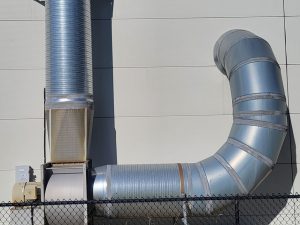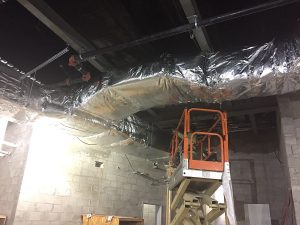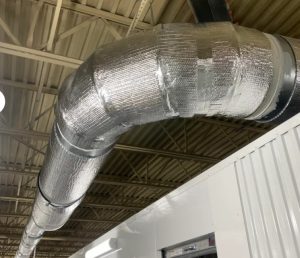9 Completing the Job
The next step we have is to seal all the duct as per the job specifications.  Using a special brush on mastic, the seams and joints are covered and sealed. Using tinfoil tape is another common method of sealing residential duct. Sometime only certain joints will be sealed and sometimes everything will be done. It is up to the company or job specifications for a residential application.
Using a special brush on mastic, the seams and joints are covered and sealed. Using tinfoil tape is another common method of sealing residential duct. Sometime only certain joints will be sealed and sometimes everything will be done. It is up to the company or job specifications for a residential application.
 Once the duct is sealed, any thermal insulation is now applied. This is particularly important in any unconditioned zones or spaces. An unconditioned zone is one which is outside the vapor barrier and not heated or cooled. An attic is an example of unconditioned space. Any duct including supply, return or exhaust must be thermally insulated in an unconditioned space to avoid condensation and extreme heat loss. Thermal insulation must fit properly and be secure.
Once the duct is sealed, any thermal insulation is now applied. This is particularly important in any unconditioned zones or spaces. An unconditioned zone is one which is outside the vapor barrier and not heated or cooled. An attic is an example of unconditioned space. Any duct including supply, return or exhaust must be thermally insulated in an unconditioned space to avoid condensation and extreme heat loss. Thermal insulation must fit properly and be secure.  Fittings like round elbows need the insulation cut just like the gores so it fits correctly. Held together with tinfoil tape, it’s almost like building another elbow, wrapped around the metal one.
Fittings like round elbows need the insulation cut just like the gores so it fits correctly. Held together with tinfoil tape, it’s almost like building another elbow, wrapped around the metal one.
